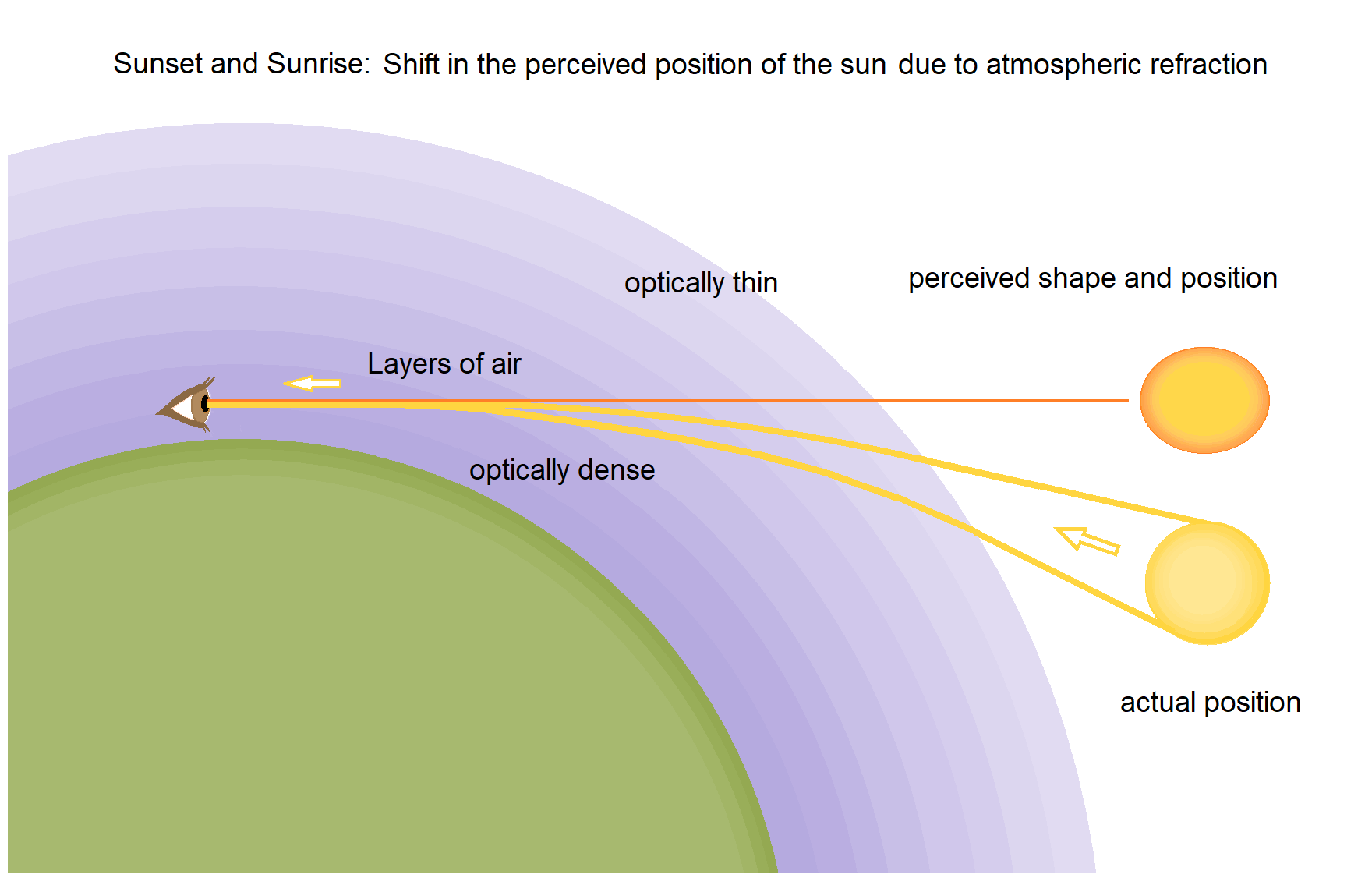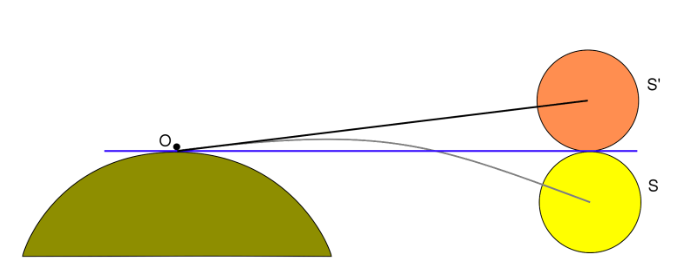Introduction
Let’s start with a fascinating experiment that you may have witnessed in your daily life. Insert a pencil or pen into a beaker of water. When you look at the pencil from outside the beaker, what do you notice? It will show up where it shouldn’t be, as you’ll discover. As a result of light refraction, this has happened.
It’s interesting to note that this occurrence is not just in water. You would see something similar if you were to use oil or any other liquid. A light ray changes direction whenever it crosses the boundary between two materials with different refractive indices. Remember that a material’s refractive index measures how quickly light passes through it in comparison.
It’s also fascinating to notice that refraction can occur even in a single medium. This is due to the fact that a substance’s refractive index alters with its density. The refractive index of a material increases with the proximity of its constituent parts. As a result, for instance, air density varies with altitude, causing light to bend as it travels through the atmosphere, a process known as atmospheric refraction.
Definition of Refraction
Refraction is the shift in a wave’s direction of propagation brought on by an inhomogeneous material. Refraction is most frequently seen in light waves. This indicates that refraction occurs anytime it comes into contact with an inhomogeneity along the way. Light can therefore “bend” when passing through the interface of two different media or when propagating across a non-uniform medium.

You can see in the accompanying diagram that the light, which would have normally followed the blue line, became distorted and ended up following the red line. The initial light ray, shown in grey, is referred to as the incident ray, while the light ray in red is referred to as the refracted ray. Which way does light bend next? is a question that might come to mind. The solution is a generalisation: light bends toward the surface normal if the second material’s refractive index is higher. If not, it refracts differently from the norm. The difference in the media’s refractive indices determines the degree of bending.
Definition of Atmospheric Refraction
The phenomenon of atmospheric refraction occurs when light from space that enters the atmosphere travels in a curved path rather than a straight line. This intriguing finding has a simple explanation for its origin. It is well known that air does not have a constant density. It alters with height instead. As a result, the refractive index is lower near the top of the atmosphere, where air molecules are further apart. The refractive index rises when density falls, and vice versa.
Atmospheric Refraction
Light continuously bends while propagating through our atmosphere as a result of this gradient-like characteristic, leading to a curved path rather than the expected straight line. You can see in the image above how the blue light rays take a curved course as they move through the various layers of air.

The explanation for Advanced Sunrise
Not all of the sunlight that strikes the earth’s atmosphere is absorbed by it. It is somewhat reflected in space. Think of viewing Earth from the international space station. You’ll notice that it seems brilliant and sparkling as a result of the earth’s atmosphere reflecting sunlight. Atmospheric reflection is the term for this phenomenon. Let’s talk about two typical consequences of atmospheric refraction: an earlier sunrise and a later sunset.
In the summer, sunrise in New Delhi, the capital of India, happens about 05:30 AM. On the other hand, if you were to stand on a rooftop and face east, you would notice that the sun rises roughly two minutes earlier. Why does that happen? Spend a moment trying to guess the solution.
The explanation is quite straightforward. The sun must be at a certain height above the horizon for light beams from it to reach your eyes, which can only happen when the sun is visible. because air’s refractive index varies, which causes the light to travel in a curved path.

Since sunlight falling on the atmosphere continuously bends as it reaches the earth, you may see the sun even when it is just below the horizon. The sun is not actually in the position it appears to be in when you view a sunrise. Simply put, it just appears a little higher due to the curve in the path of the sun.
The explanation for Delayed Sunset
The sun has set, which means that you can no longer see it. It has descended so low on the horizon, in other words, that light cannot enter your eyes anymore. However, even after the sun has passed the horizon due to atmospheric refraction, sunlight is still visible for a few minutes. We refer to this as a delayed sunset. As with advanced sunrises, the curved path of sunlight in the atmosphere is the cause of delayed sunsets as well.
Summary
Refraction is defined as the change in direction of propagation of light when it encounters a change in refractive index. It is observed whenever there is some sort of inhomogeneity in the medium or the path of light. When light moves in the direction of an area with a higher refractive index, it bends in the direction of the normal. Our atmosphere’s refractive index is higher close to the earth’s surface than it is farther away because it also contains a density gradient. Thus, as light travels to the earth’s surface, it continuously curves into a path. The term for this is atmospheric refraction. The sunrise appears to happen a few minutes earlier than usual due to atmospheric refraction. Similar to this, the sun is still visible after it has actually crossed the horizon, delaying sunset. Both of these events take place because atmospheric refraction makes the sun appear to be a little bit higher in the sky than it actually is.
Frequently Asked Questions
1. State the laws of refraction.
Ans. When light passes from one medium to another medium with different refractive indices, two laws of refraction are followed:
1. The incident ray, the refracted ray, and the surface normal all together lie in the same plane.
2. The ratio of the sines of angles of incidence and refraction is equal to the ratio of refractive indices of the materials.
2. By what amount does light bend due to refraction?
Ans. According to the second law of refraction also named as Snell’s law, we can write a relation between the incidence and the refraction angles, such that,
$$
\frac{\sin \theta_i}{\sin \theta_r}=\frac{n_2}{n_1}
$$
Therefore, if we know the angle of incidence and refraction, and refractive indices of the two different mediums, we can calculate the angle of refraction.
3. What other phenomena occur due to atmospheric refraction?
Ans. The phenomenon of mirage and twinkling of stars are the two very common natural examples of the effects of atmospheric refraction.
4. Does the amount of refraction depend upon the colour of light?
Ans. Yes, the refraction of light depends upon the wavelength, and the colour of light depends upon the frequency. The refractive index that a beam of light “sees”, or “experiences” depends upon its wavelength.
5. Which colour of light bends the most?
Ans. The Cauchy’s equation, refractive index $$
n=A+\frac{B}{\lambda^2}+\frac{C}{\lambda^4}+\ldots,
$$
where λ is the wavelength of light, and A, B, and C are constants. Thus, from the above formula we can speculate that the light of smaller wavelength, or higher frequency will bend more. This corresponds to violet light in the visible region, which bends the most.
 Mission Statement
Mission Statement
“Empower every student to achieve full potential”
88Guru has been established with the social objective of making quality video-based learning material available to all Indian students. Technology, Connectivity and Social Media are rapidly changing the world of Education and we wish to lead the transformation of the tuition industry in India.
88Guru is the perfect complement to the current tuition model. 88Guru creates a wonderful opportunity for children and parents to bond while engaging in a valuable learning activity. It also provides the complete curriculum at your fingertips for those moments when you need some help at short notice. We believe that this mode of tuition could be transformational, adding hours to a child's day while providing complete control over the learning process.
Every course is taught by the best teachers from India's top schools and conducted in an engaging manner to keep students involved. The e-learning process consists of video-based instructions, computer-graded assignments, and a dashboard which allows the student and parent to track progress.


